Fear is very bad for one’s health.
Fear weakens our immune system and can cause cardiovascular damage, gastrointestinal problems such as ulcers and irritable bowel syndrome, and decreased fertility. It can lead to accelerated ageing and even premature death.
A second, powerful effect of fear relates to memory, brain function, and our ability to think and reason.
Fear can impair formation of long-term memories and cause damage to certain parts of the brain, such as the hippocampus. […] To someone in chronic fear, the world looks scary and their memories confirm that. […] Fear can interrupt processes in our brains that allow us to regulate emotions, read non-verbal cues and other information presented to us, reflect before acting, and act ethically. This impacts our thinking and decision-making in negative ways, leaving us susceptible to intense emotions and impulsive reactions. All of these effects can leave us unable to act appropriately.
We think this current coronacircus situation highlights this perfectly well.
In this post we would like to present a number of undisputable facts that will make this even clearer.
- Even after the propaganda outlets declare victory, i.e. after the “pandemic has passed”, the “coronavirus” will not have disappeared. It will still be “out there”; one may still catch it. Therefore, the most rational thing to do would be to try and catch it early, to get it over with before the “hospitals are saturated”, than risk catching it at the peak of the crisis.
- According to the same outlets, in Italy men have accounted for the vast majority of deaths (71%) of the coronavirus. Furthermore, and according to Statista life expectancy for men in Piedmont is 80.7 years, 81.5 in Emilia-Romagna, and 81.4 years in Lombardy. Finally, the average age of people who’ve died from the virus (mostly those three regions) in Italy is 79.5 years old. Therefore, the coronavirus has not significantly altered life expectancy in Italy, especially when accounting for the relentless fear propagated by the press and its health impact highlighted above.
- EuroMOMO (European Monitoring of Excess Mortality for Public Health Action), an organization whose advisory board has representatives of ECDC, the WHO, EUROSTAT and EISN, publishes every week bulletins of the all-cause mortality levels in up to 24 European countries or regions of countries. It pools data from different countries in order to detect and show excess all-cause mortality. Here is their graph for excess mortality of people above 65 years old, from 2016 to today.
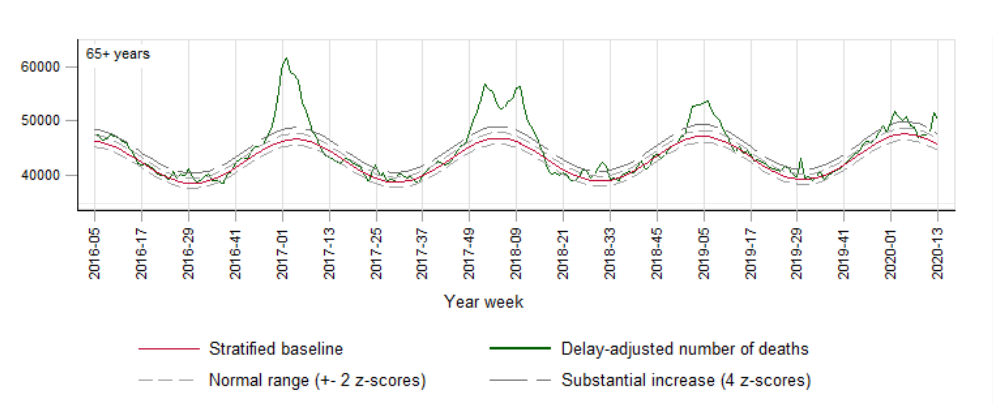
Here is their graph for excess mortality of people between 15 and 64 years old, from 2016 to today.

Now compare their excess mortality map between week 3, 2017 and week 8, 2020 (the week Italy enacted a national lockdown). For the sake of completeness, the following weeks are displayed below too.
Please keep in mind the “pandemic pleateaued” today in Italy and Spain.

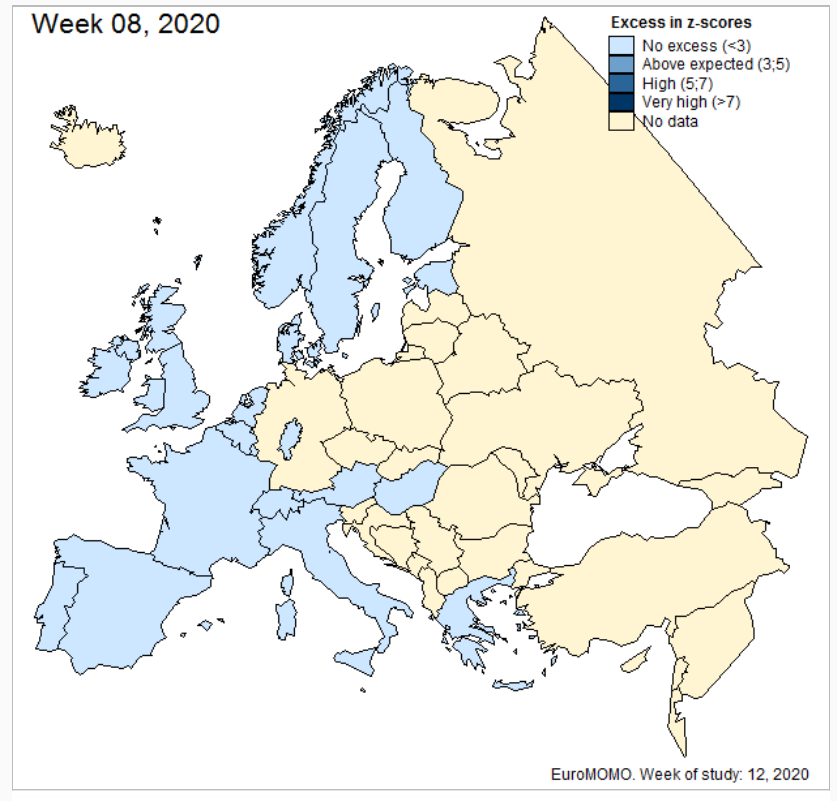

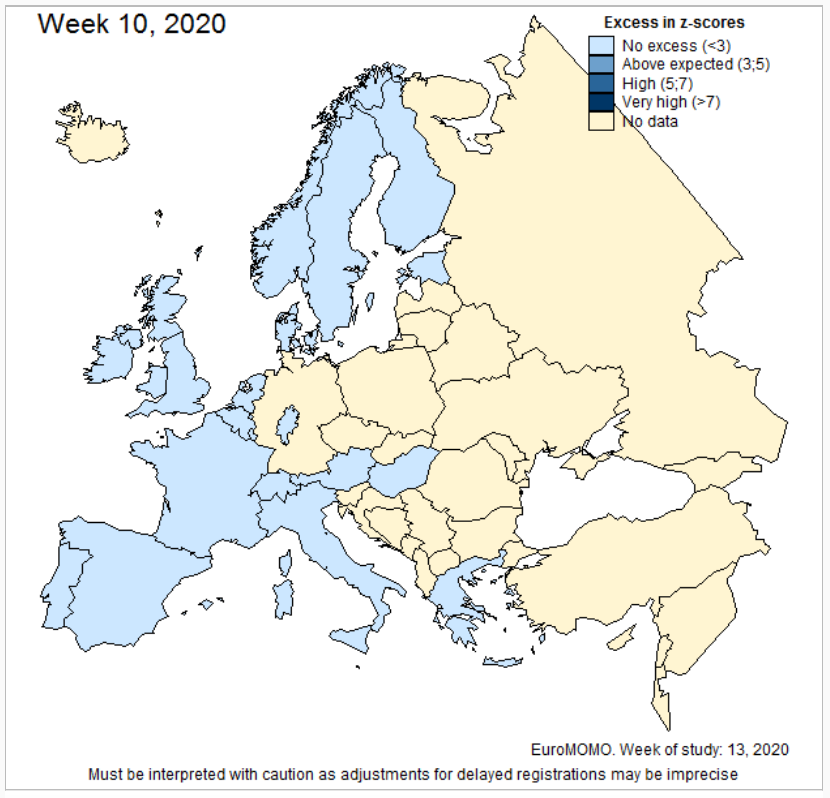
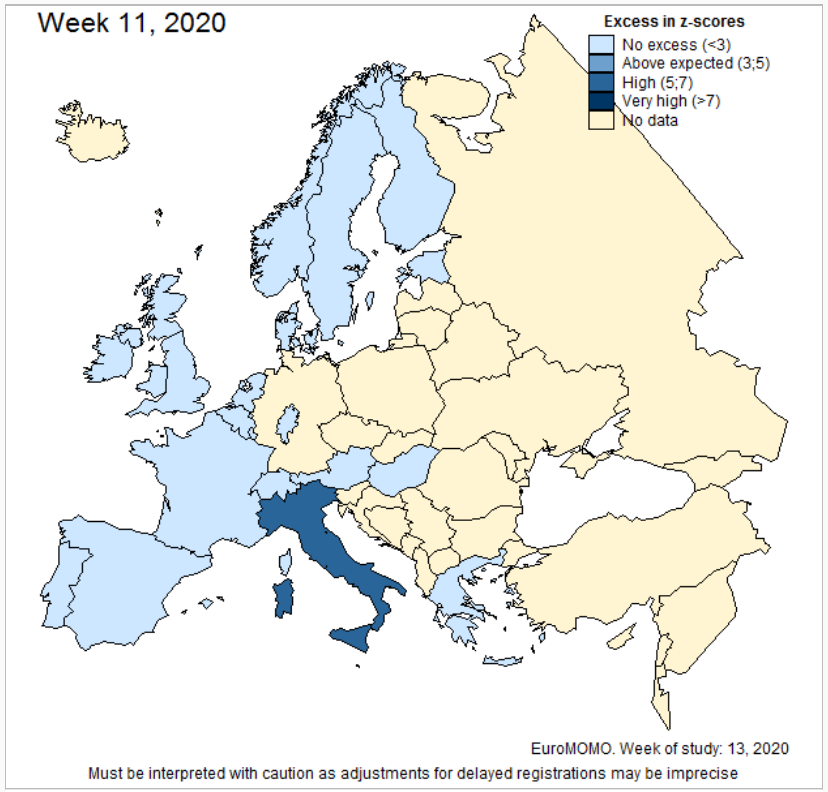
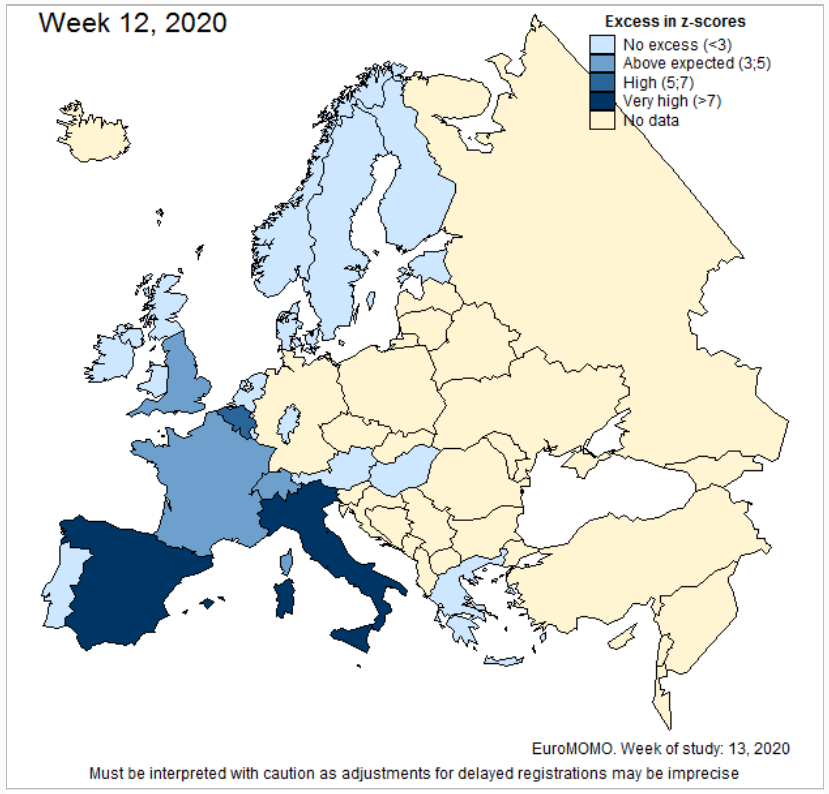
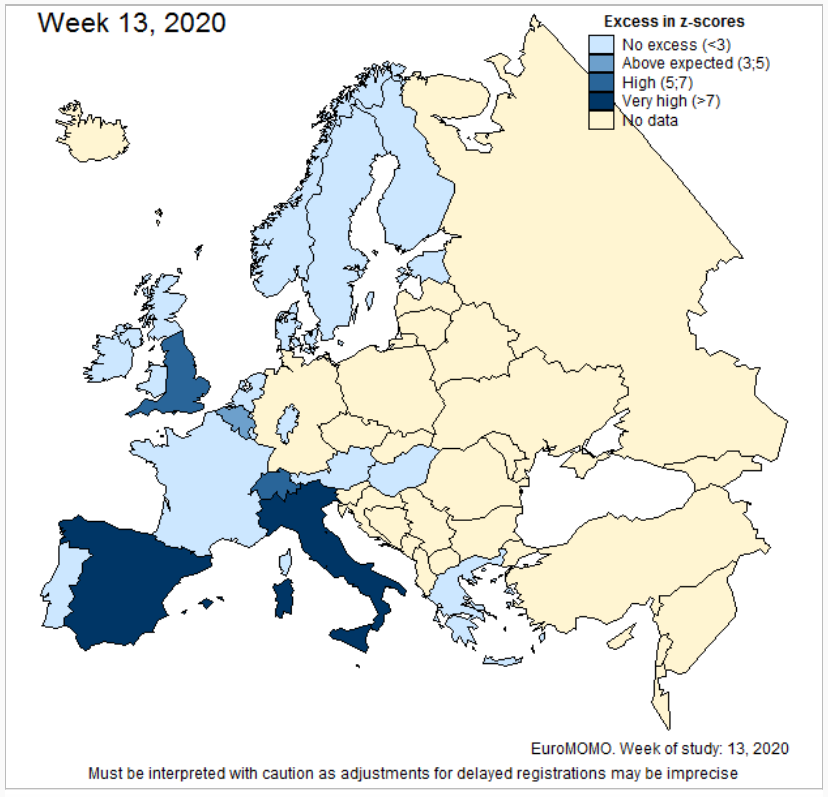
- Apart from the coronavirus, there exists other dangers to one’s health. For example, 250,000 people die in the USA every year of medical error. Also of note, vitamin D deficiency (e.g. people who don’t go out and don’t get enough sun) is also responsible for a significantly higher risk of dying. Furthermore studies have shown a high degree of correlation between unemployment and suicide. Will all of these be counted as “coronavirus casualties”? They certainly should.
Conclusion
It is our belief that this information, that is very easy to find, as everything else that we are publishing on our website, will soon become common knowledge. In the “post-mortem” phase, when the fear has dissipated, and when looking back on the crisis, people will realize how utterly irresponsible public health authorities (and the press) have been.
They may revolt, and that might be the plan.